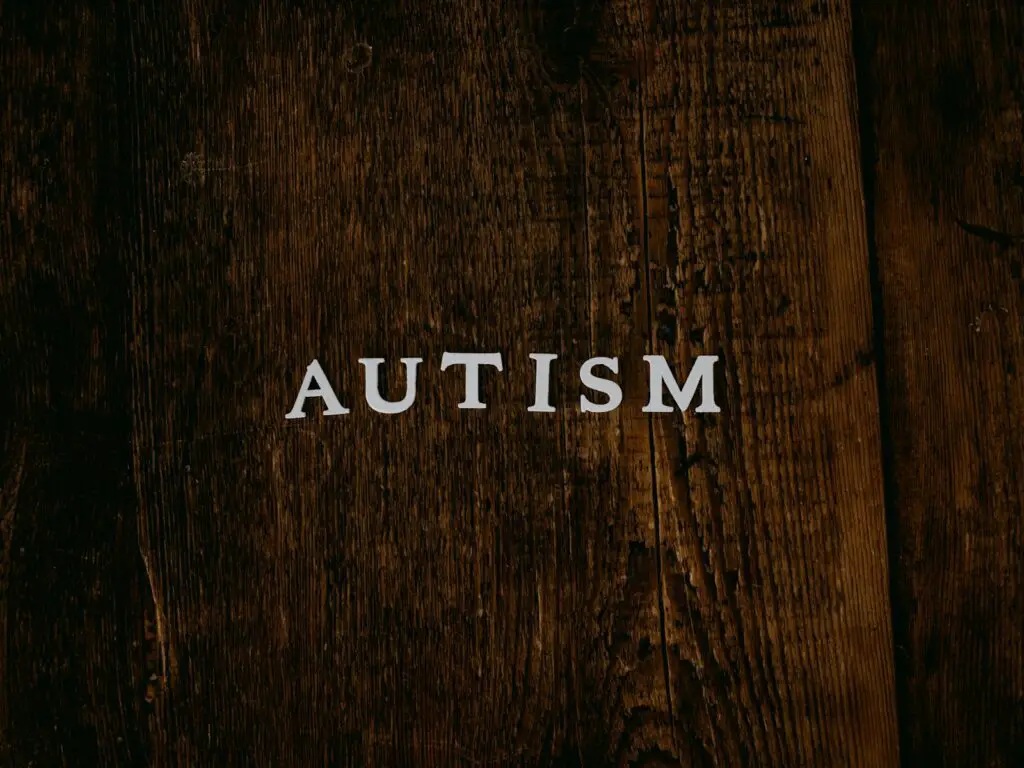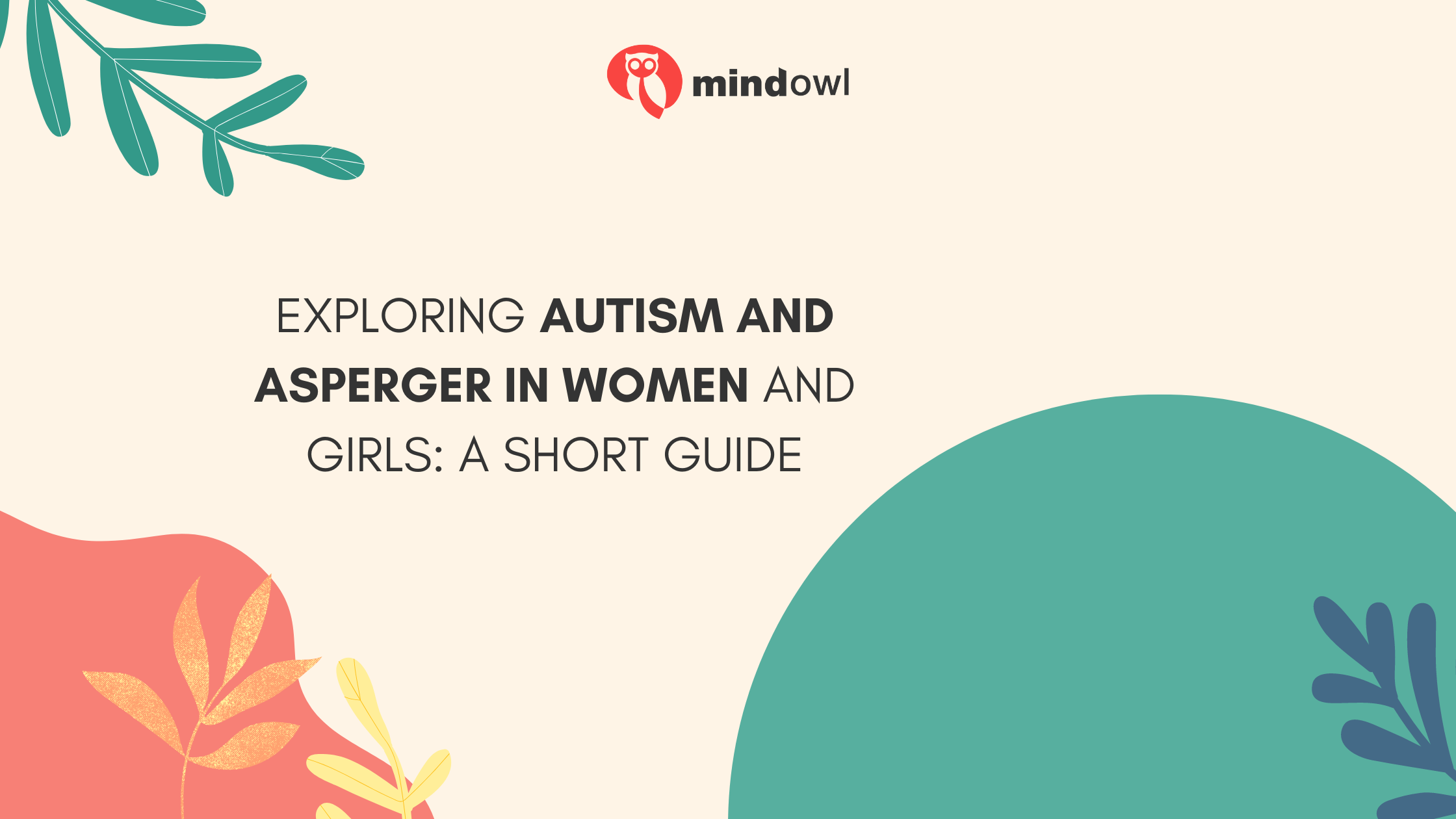Are you wondering if autism shows up differently in women and girls? Autism, including Asperger syndrome, doesn’t always look the same way it does in men. This difference can make it hard for women and girls to get the right help and understanding they need.
In this article, we’ll discuss what autism looks like in women and girls – from common signs to the challenges they face. You’ll get insights into why so many go unnoticed and what support is available out there.
Key Takeaways
- Autism looks different in women and girls because they often hide their symptoms better.
- Many autistic females deal with extra health issues like ADHD and anxiety.
- Girls with autism might find it tough to understand social cues or fit into group conversations, which can make making friends harder.
- Women on the spectrum may have trouble at work or school because others don’t always see their struggles.
- It’s important for doctors and teachers to know how autism shows up in females so they can support them better.
Autism and Women: How it Differs from Men
Greater ability to mask symptoms
Many girls and women with autism have a strong ability to hide their symptoms. They learn to act in ways that seem normal to others. This is often called “camouflaging” or “masking.” They might make eye contact, carry on conversations, and show interests similar to their peers.
Because of this skill, autism in females can go unnoticed.
Girls might also copy socially successful people around them. They observe and mimic social behaviour, which hides their social communication difficulties. This camouflaging means that many females with autism don’t get the diagnosis or support they need early on.
Their true challenges remain hidden behind the mask they wear every day.
Differences in social and emotional behaviour
Autistic women often find social cues and nonverbal communication challenging. They might miss subtle hints in conversations or misunderstand body language. This can make interactions with others tricky, leading to confusion or misunderstanding on both sides.
Despite this, many autistic women develop ways to cope. They learn scripts for social situations or mimic others to blend in. This effort is part of a strategy known as camouflaging or masking.
The emotional toll of constantly trying to appear neurotypical is high. Autistic women may feel exhausted from the constant effort it takes to fit in. They also deal with intense emotions and sensitivity issues, making some environments overwhelming due to sensory processing sensitivity.
Depression, anxiety, and suicidal thoughts are sadly more common among autistic females because of these pressures.
The strain of camouflaging one’s autism can lead not only to emotional exhaustion but also severe mental health struggles.
Higher rates of co-occurring disorders
Many women and girls with autism face extra challenges because they often have other health issues alongside it. Between 73% and 81% of adults on the spectrum deal with at least one mental health condition.
This includes things like ADHD, problems related to eating, mood disorders, and feeling unsure about their gender identity. These can make life harder for them in many ways.
They might find it tougher to get the right help because these additional conditions can hide or change how their autism shows up. For instance, those struggles with ADHD may overshadow social communication difficulties, making diagnosis a complex puzzle.
Health professionals need to pay close attention to these overlapping symptoms for a more accurate understanding of each individual’s needs.

Common Signs and Symptoms of Autism in Women and Girls
Social communication and interaction difficulties
Women and girls with autism often face challenges in social communication and interaction. They might find it hard to read social cues or understand the unwritten rules of conversation.
This can make forming friendships challenging, especially when societal expectations put pressure on them to behave in certain ways. Many try to camouflage their difficulties by copying others’ social behaviour, a process known as autistic masking.
However, this can be exhausting and doesn’t always lead to successful interactions.
Their struggle can extend into work environments where they may misinterpret criticism or have trouble letting go of ideas. It’s not uncommon for these women to feel stigmatised, which adds an extra layer of difficulty in managing social norms and building relationships—both personal and professional.
Understanding the nuances of communication is like deciphering a complex code for many women with autism.
Behavioural patterns and habits
Many girls and women on the autism spectrum form specific behavioural patterns and habits. These routines can offer a sense of order in an otherwise overwhelming world. For instance, they might stick to strict schedules for everyday activities or prefer foods with certain textures.
Such habits help them manage sensory sensitivities that come with ASD (Autism Spectrum Disorder). Rudy Simone highlighted black and white thinking as another trait in “Aspergirls: Empowering Females with Asperger Syndrome”.
This mindset means seeing things in terms of absolutes – something is either completely right or wrong, with no grey area.
Their struggle with change also stands out. Various situations like unexpected alterations in daily plans can cause significant distress. Routine disruptions are especially challenging, making changes difficult to handle without anxiety or resistance.
An understanding of these unique behavioural patterns is important for those around autistic women and girls, aiding better support mechanisms tailored to their needs.
Intellectual abilities and educational experiences
Autistic women often face unique challenges in education and work. They may have high intellectual abilities but struggle with slow processing, sensory issues, and anxiety. These struggles can lead to underemployment, as many find their jobs do not match their skills or training.
Despite these hurdles, autistic women bring valuable perspectives and talents to the table.
Educational experiences for autistic girls can be mixed. While some excel academically due to their focus and attention to detail, others might find classroom settings overwhelming because of sensory sensitivities or social communication difficulties.
Teachers and educational professionals must recognise these varied needs, offering support where necessary to ensure all students thrive.

Challenges Faced by Women with Autism
Women with autism encounter unique challenges that are often overlooked. These include difficulties in forming and sustaining social relationships, as well as facing obstacles in securing employment and accessing appropriate support services.
Understanding these challenges is crucial to providing effective support for women and girls on the autism spectrum. For more insights into the experiences of women with autism, keep reading our blog!
Misdiagnosis and lack of awareness
Doctors often miss signs of autism in women and girls because they are looking for traits more common in men. This lack of awareness means many females go undiagnosed or receive incorrect diagnoses, such as anxiety or borderline personality disorder.
Recent research suggests the female-to-male ratio could be as low as 1:1.8 among those with high verbal skills.
Health professionals might not know how autism shows differently in women and girls. They may overlook it amid conditions like obsessive–compulsive disorder or depression. Identifying the correct diagnosis opens doors to necessary support and understanding.
Every individual on the autism spectrum has unique challenges and strengths – recognising this is key to providing appropriate support.
Struggles in social and romantic relationships
Women with autism often face difficulties in forming and maintaining social connections, leading to feelings of isolation and exclusion. Their challenges in understanding nonverbal cues and navigating complex social interactions can make it hard to establish meaningful relationships.
Additionally, many autistic women may struggle with interpreting romantic gestures or expressing their own feelings, further complicating their experiences in intimate relationships.
The prevalence of these struggles contributes to higher rates of loneliness and emotional distress among women with autism.
The above-mentioned difficulties are particularly exacerbated by the prevailing misconception that autism primarily affects men, leading to a lack of recognition and understanding of the unique social and romantic challenges faced by women on the spectrum.
This under-recognition can result in fewer support resources tailored specifically for autistic females, further compounding their struggles in this aspect of life. Consequently, raising awareness about these issues is crucial for providing better support systems and fostering inclusive environments where autistic women feel understood and valued in both friendships and romantic partnerships.
Difficulties in the workplace and education
Women with autism often encounter challenges in the workplace, facing difficulties in obtaining and maintaining employment. They are also more likely to experience social exclusion, which can further hinder their career prospects.
Policies addressing attitudinal, structural, and procedural changes within the workplace could provide valuable support for autistic women seeking sustainable and meaningful work opportunities.
In educational settings, girls with autism may face obstacles related to misdiagnosis and lack of awareness about their condition. This can lead to struggles in accessing appropriate support services and accommodations that are crucial for their academic success.
Recognising these challenges is essential for creating a more inclusive environment that empowers women with autism to thrive academically.
Recognising Autistic Traits in Women and Girls
Recognising the unique Female Autism Profile is crucial in early identification and diagnosis. Commonly missed signs and red flags can lead to undiagnosed autism in girls, making it essential for health professionals to recognise these traits.
Understanding the Female Autism Profile
Autism in females can present differently than in males, often requiring a deeper understanding of the distinctive female autism profile. Girls with autism may display more subtle social difficulties and internalising behaviours compared to boys, making it challenging to recognise their autistic traits.
Recognising these differences is crucial for early identification and accurate diagnosis, ensuring that girls receive appropriate support and services tailored to their specific needs.
Despite being less likely to be diagnosed than boys, many females exhibit similar characteristics associated with autism and should not be overlooked when considering an autism assessment.
It’s important for health professionals and educators to be knowledgeable about the unique presentation of autism in women and girls, allowing them to effectively evaluate and support individuals who may have undiagnosed autism.
Early identification and diagnosis
Autistic females may show different early signs than males, making it crucial to understand the specific markers of autism in girls and women. To help with early identification and diagnosis, consider the following:
- Social Communication Indicators: Look for atypical social interactions, such as difficulty maintaining conversations or engaging in reciprocal communication. Pay attention to a tendency to mimic social behaviours without genuine understanding.
- Behavioural Patterns: Observe repetitive behaviours or restricted interests that may differ from those typically exhibited by boys with autism. Note any unique sensory sensitivities or stimming behaviours.
- Educational Experiences: Identify any challenges in school, including difficulties with peer relationships, lack of interest in typical childhood games, and a preference for solitary activities.
- Intervention Strategies: Implement gender-sensitive assessment tools and diagnostic criteria that account for the nuanced presentation of autism in females.
- Parental Reporting: Encourage parents to report specific concerns about their daughters’ development and behaviour patterns for more accurate assessments.
- Professional Training: Provide healthcare professionals and educators with training on recognising the female presentation of autism to prevent misdiagnosis or underdiagnosis.
- Research and Awareness Campaigns: Advocate for increased research into the unique experiences of autistic girls and women to further refine diagnostic processes.
Ensure early recognition through gender-specific observations and assessments tailored to the unique characteristics of autism in females.
Commonly missed signs and red flags
Many autistic women and girls exhibit signs that often go overlooked, leading to delayed or missed diagnoses. Here are the commonly missed signs and red flags:
- Masking behaviours, where they mimic neurotypical social cues to fit in.
- Special interests that may be different from typical male-focused stereotypes, such as animals or literature.
- Sensory sensitivities, like discomfort with certain clothing materials or textures.
- Difficulty understanding and expressing emotions, particularly in a way that’s expected by society.
- Camouflaging social difficulties by using coping mechanisms like mirroring others’ conduct.
- Tendency to internalise feelings of anxiety or depression rather than displaying them outwardly.
- Struggles with executive functioning skills, such as planning and organisation, leading to challenges at work or school.
- Different communication style – may be more passive or indirect compared to males.
These subtle yet impactful signs often lead to misdiagnosis or lack of diagnosis for many women and girls on the autism spectrum.
Seeking Support and Understanding
Seeking support and understanding can significantly improve the lives of women with autism. Accessing resources and services, empowering and advocating for women with autism, and creating a more inclusive society are crucial steps to take.
Accessing resources and services
Accessing resources and services for women with autism:
- Research and connect with local autism support groups and organisations for tailored assistance, such as the National Autistic Society‘s ‘Now I Know’ campaign.
- Explore mental health services that recognise the unique needs of autistic women, offering support for co-occurring conditions like anxiety and depression.
- Utilise educational resources specifically designed to empower and educate women with autism, ensuring access to tailored learning materials and support networks.
- Seek out specialist diagnostic services that understand the distinct experiences of women on the spectrum, providing accurate assessments and early identification.
- Engage with workplace initiatives promoting inclusivity for autistic individuals, accessing professional guidance on navigating employment challenges.
- Collaborate with community resources to raise awareness and understanding of autism in women, contributing to a more supportive societal environment.
Ensure every woman and girl has the opportunity to access the customised resources they need for their individual journey with autism.
Empowering and advocating for women with autism
Empowering and advocating for women with autism involves creating a more inclusive society where resources and services are readily accessible. It’s essential to raise awareness of the unique challenges faced by autistic women, as this can lead to early identification and diagnosis.
Additionally, it’s crucial that health professionals are adept at recognising autistic traits in women and girls to ensure they receive the support they need. By understanding the female autism profile, individuals can subscribe for weekly emails, monthly news, updates, and more from AANE – an organisation dedicated to empowering adults with high-functioning autism or Asperger’s.
Creating a more inclusive and understanding society
Creating a more inclusive and understanding society involves raising awareness about autism in women and girls, challenging stereotypes, and providing tailored support. Recognising the unique experiences of females with autism is crucial for promoting acceptance and empathy.
Accessible resources, education on neurodiversity, and sensitivity training are essential to foster a culture of inclusion.
Empowering autistic individuals through advocacy efforts, creating safe spaces for open dialogue, and promoting diverse representations in media can contribute to a society that embraces differences.
By prioritising inclusivity in various settings such as workplaces, educational institutions, and public spaces, we can ensure that women with autism feel valued and understood in all aspects of life.
Conclusion
In conclusion, understanding the unique experiences of autistic women and girls is crucial for creating a more supportive and inclusive society. With 73-81% of autistic adults navigating mental health diagnoses, it’s essential to provide targeted support and resources.
AANE’s advocacy role in raising awareness and identifying autism in women has been instrumental over the last 25 years, emphasising the need for improved understanding. By recognising the internalised experience of autism and addressing societal stigmas faced by autistic women, we can create a more empathetic environment where individuals feel supported and understood.
Autism research has shed light on the deep and varied interests of autistic individuals which evolve throughout their lifetime. Identifying these traits early through accessible resources can contribute to better recognition and support for autistic women.
Additionally, offering specific support groups tailored to diverse gender identities is vital in ensuring that everyone affected by autism receives adequate care and understanding within our communities.
MindOwl Founder – My own struggles in life have led me to this path of understanding the human condition. I graduated with a bachelor’s degree in philosophy before completing a master’s degree in psychology at Regent’s University London. I then completed a postgraduate diploma in philosophical counselling before being trained in ACT (Acceptance and commitment therapy).
I’ve spent the last eight years studying the encounter of meditative practices with modern psychology.

